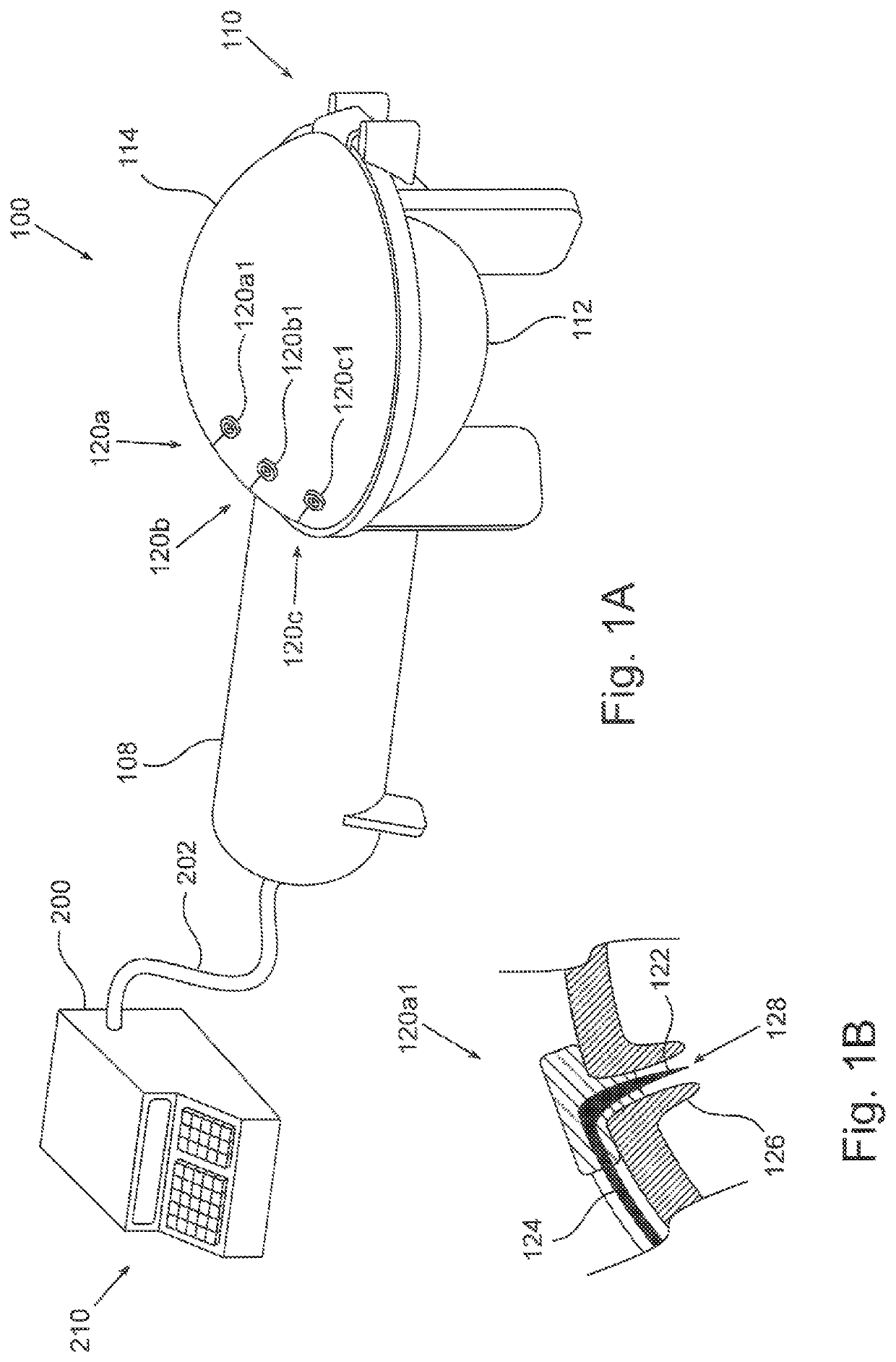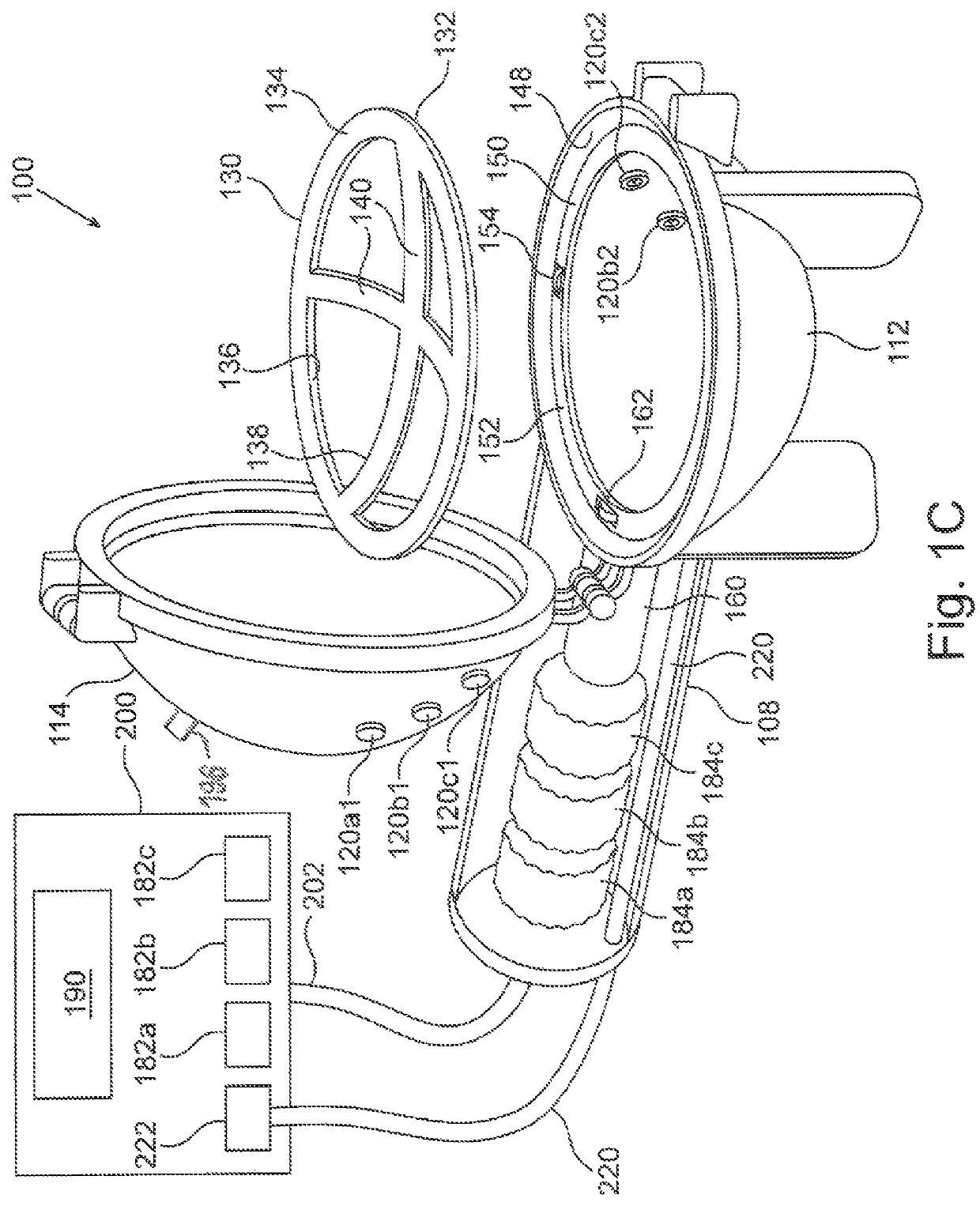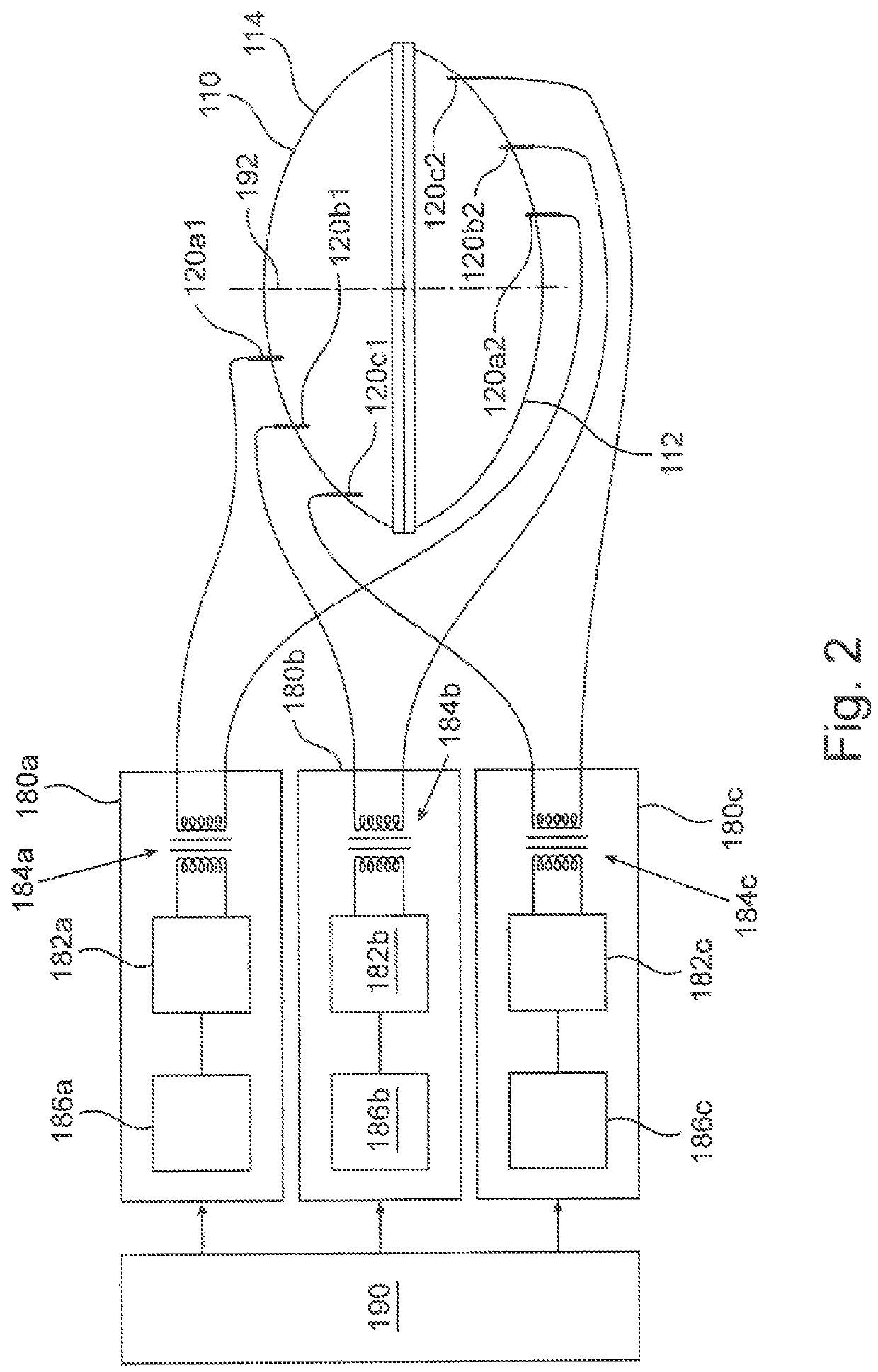Plasma treating an implant
- Summary
- Abstract
- Description
- Claims
- Application Information
AI Technical Summary
Benefits of technology
Problems solved by technology
Method used
Image
Examples
Embodiment Construction
[0030]The principles, uses and implementations of the teachings herein may be better understood with reference to the accompanying description and figures. Upon perusal of the description and figures present herein, one skilled in the art is able to implement the teachings herein without undue effort or experimentation.
[0031]FIG. 1A schematically depicts an embodiment of a plasma generating apparatus 100 for treating a breast implant prior to using the implant in a medical procedure. Plasma generating apparatus 100 comprises an auxiliary unit 108 and a plasma chamber 110, depicted here in a closed configuration. The auxiliary unit is described in more detail in FIG. 1C. Plasma chamber 110 comprises a base 112, and a cover 114 configured to lock onto base 112, both made of a dielectric material such as glass or a polymer. At least one of base 112 and cover 114 is concave, possibly curved, so as to define an internal void (not explicitly shown here) inside the plasma chamber when cove...
PUM
| Property | Measurement | Unit |
|---|---|---|
| voltage | aaaaa | aaaaa |
| frequency | aaaaa | aaaaa |
| frequency | aaaaa | aaaaa |
Abstract
Description
Claims
Application Information
 Login to View More
Login to View More - R&D
- Intellectual Property
- Life Sciences
- Materials
- Tech Scout
- Unparalleled Data Quality
- Higher Quality Content
- 60% Fewer Hallucinations
Browse by: Latest US Patents, China's latest patents, Technical Efficacy Thesaurus, Application Domain, Technology Topic, Popular Technical Reports.
© 2025 PatSnap. All rights reserved.Legal|Privacy policy|Modern Slavery Act Transparency Statement|Sitemap|About US| Contact US: help@patsnap.com



